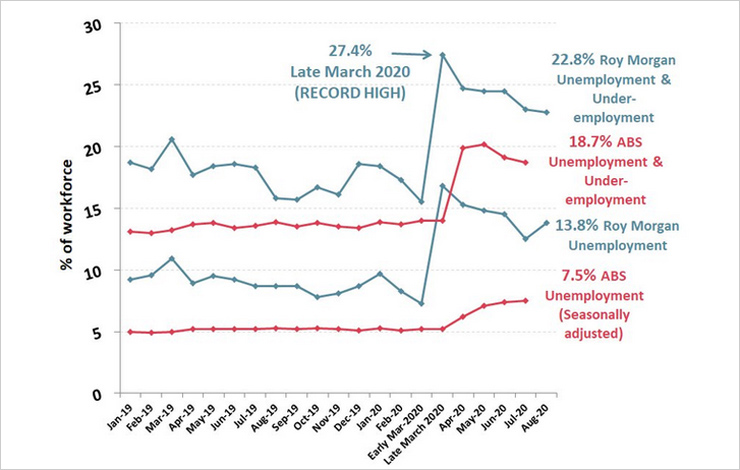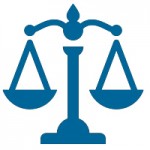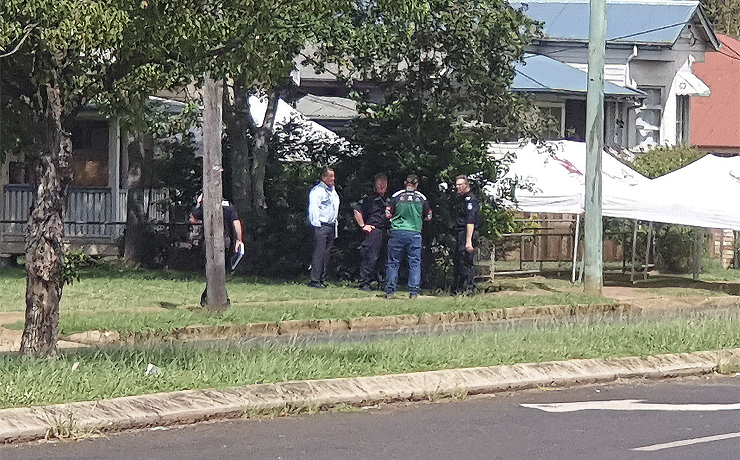

September 4, 2020
Average unemployment across Australia rose to 13.8 per cent in August according to market research firm Roy Morgan … but in Queensland, it has hit 16 per cent.
Similar increases also occurred in Tasmania and Western Australia.
The research company believes a further 9 per cent of the total Australian workforce are currently under-employed (ie. working part-time and seeking more work).
This would bring the combined total for unemployed and under-employed Australians to 22.8 per cent of the work force, or about 3.27 million people.
This compares with the official Australian Bureau of Statistics (ABS) figures, which show lower numbers due to the way the ABS calculates employment and under-employment.
Roy Morgan said unemployment had increased in every State in August, except Victoria which was locked down.
Queensland, Tasmania and Western Australia suffered the worst increases – unemployment in these three States rose at least 3 per cent.
By contrast, NSW and Victoria both had an estimated unemployment rate of 12 per cent, with South Australia very close to the national average.
Compared to early March, Roy Morgan estimates there are now an extra 1.1 million Australians either unemployed or under-employed (up 7.2 per cent).
Roy Morgan CEO Michele Levine said the data showed unemployment actually increased in August as restrictions eased and Australians re-joined the workforce.
She said pressure on governments to tackle unemployment was likely to rise soon.
“At the end of September the JobKeeper wage subsidy is set to be lowered by $300 to $1200 per fortnight for full-time workers and cut in half to $750 per fortnight for those who were working less than 20 hours per week in the pre-pandemic period,” Ms Levine said.
“The JobSeeker payment for the unemployed is also set to be reduced by $300 at the end of the month.
“The reductions of these payments will put pressure on States to open up their economies and reduce border restrictions that are hampering businesses and slowing growth.
“States such as Queensland and Tasmania, which rely heavily on tourism and have amongst the highest rates of unemployment in the country, are set to feel the most pressure to open up as government support is progressively reduced.
“The reductions in payments will also put pressure on employers and employees, and unemployment and under-employment are likely to increase again as JobKeeper-dependent employers reduce their employee numbers or close altogether, and JobKeeper-dependent employees start to look for more work.”
On a positive note, Roy Morgan noted that although there were 89,000 fewer people employed in August than July, there were 138,000 more full-time workers and 227,000 fewer part-time workers.
The latest Roy Morgan survey on unemployment is based on 6119 interviews carried out in August.
“Under-employed” are people who are in part-time work or freelancers who are looking for more work.























